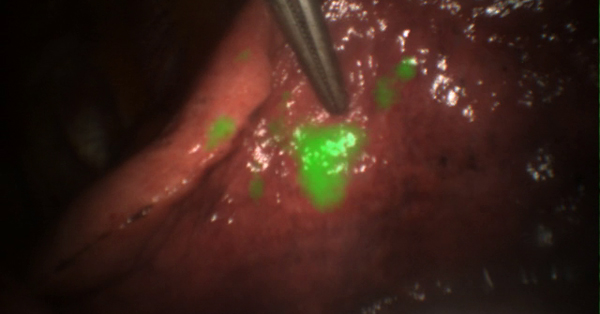
This week Penn Medicine officially launched the Center for Precision Surgery, one of several emerging Centers at Penn under the umbrella of “precision medicine.” This new frontier in disease diagnosis and prevention uses genetic and other unique personalized information to deliver the right treatment, to the right person, at the right time.
Precision medicine is changing the game in the medical and surgical care of patients with cancer and more. But, the name begs the question, were we once imprecise in our cancer treatments? Not really. It’s just that technology has given us the tools to be more precise than ever in how we diagnose and treat patients.
Sunil Singhal, MD, an assistant professor of Surgery and director of the Penn Medicine Thoracic Surgery Research Laboratory was inspired by a former patient to develop a better, more precise surgery for his lung cancer patients.
His lab developed and recently began using live molecular imaging in the operating room to help remove tumors using an injectable dye that has been specially engineered to accumulate in cancerous tissues, much more so than normal tissues, making the tumor “glow” under infrared lighting during surgery.
“This technology has afforded us the ability to remove tumors in areas not visible to the naked eye and identify new tumors and surgically remove them, lowering the chance of a cancer recurrence and improving survival for our patients,” Singhal said.
“In one in four surgeries, cancerous or diseased cells are left behind, Singhal explained at Monday’s launch event. “This technology gives surgeons the ability to improve upon this.”
And, it is now being employed across Penn Medicine in an expanding list of surgeries, including brain, liver, pancreatic and prostate cancers.
Lancaster resident Jenn Blanchette was a recent beneficiary of this advanced technology.
Diagnosed in late 2015 with a rare brain tumor, an olfactory neuroblastoma, she underwent surgery in January under the care of John Y.K. Lee, MD, an associate professor of Neurosurgery and co-director of the Center for Precision Surgery after her local neurosurgeon told her the procedure was beyond his scope of practice. Her tumor arose from the thin nerve fibers related to our sense of smell in the top of the nose and grew into the frontal lobe of her brain. Removal required an intricate surgery involving the skill sets of both Dr. Lee and a surgeon from the Department of Otorhinolaryngology: Head and Neck Surgery. Blanchette was injected with the dye prior to surgery, making her tumor glow intraoperatively.
“In brain surgery, we need to have a precise detection of the tumor’s margins,” Lee said. “Cutting out normal brain is not an option. We are excited to study these novel dyes and camera technology to make surgery more safe and accurate.”
After a successful surgery, Blanchette is now proceeding with radiation treatment through proton therapy at Penn’s Perelman Center for Advanced Medicine.
Tom Guzzo, MD, MPH, an associate professor of Urology and a Center co-director has found that a more precise surgery affords his prostate and bladder cancer patients a better quality of life. “Many of the unpleasant side effects of these surgeries can include urinary incontinence, sexual dysfunction and body image issues,” Guzzo explained. “If we can resect only the cancerous tissue and nothing more, it gives these patients a better chance at a normal or renewed quality of life.”
Singhal, Lee and Guzzo as well as Abramson Cancer Center director, Chi Van Dang, MD, PhD, celebrated the new opportunities this technology and the promise of precision medicine allows for better patient care and outcomes, and the strength of the collaborative efforts made possible at Penn, allowing new technologies such as this to proliferate, and positively affect a larger subset of patients.
“This Center,” Singhal explained, “is all about the patients.”